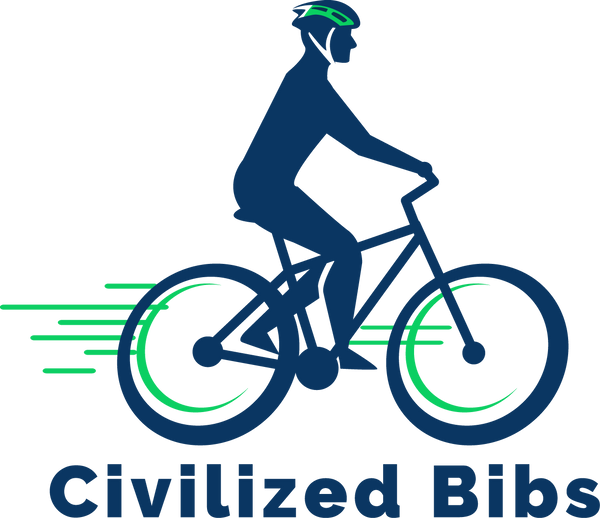How to Choose the Right Cycling Bib Shorts
Straight up - shopping for cycling bibs can feel like decoding a secret language. Between compression ratings, chamois thickness, and fabric technologies that sound like they belong in a sci-fi movie, it's easy to get overwhelmed. But finding comfortable cycling bibs doesn't have to be complicated.
First things first - if you're wondering whether cycling bibs are worth it, the answer is yes. Those suspender-like straps might look strange, but they serve a real purpose. Unlike regular cycling shorts which can dig into your stomach or slide down, bibs stay put without squeezing your middle. Think of them as the overalls of the cycling world - but way more comfortable.
What Actually Matters When Choosing Cycling Bibs
The Chamois (That's the Padding)
Here's what no one tells you - the most expensive chamois isn't automatically the best. What matters is:
- How it fits your body shape
- Whether it moves with you (instead of fighting against you)
- If it works for your riding style
A good chamois feels like it's not there. If you're constantly aware of it, something's wrong.
Fit and Sizing
The number one mistake cyclists make? Buying bibs that are too big because they're worried about compression. Quality cycling bibs should:
- Feel snug but not suffocating
- Stay in place without riding up
- Move with you, not against you
- Support without squeezing
Pro tip: If you're between sizes, try both. The right fit makes all the difference between "I could ride all day" and "are we there yet?"
Pricing Guide
Here's the truth about cycling bib shorts pricing:
- Budget ($50-100): Fine for short rides, but might not last
- Mid-range ($100-170): Sweet spot for most regular riders
- Premium ($170+): Worth it if you're doing century rides or riding daily
But here's what matters: comfort doesn't always correlate with price. Some of the most comfortable cycling bibs aren't the most expensive ones.
How to Know If Cycling Bibs Fit Right
Try this quick test in the fitting room:
- Do a few squats
- Bend over like you're on the bike
- Walk around for a minute
- Sit down and stand up
If nothing pinches, pulls, or feels weird, you're probably good to go.
The Break-In Period
New cycling bibs are like new shoes - they need a break-in period. Give them 2-3 rides before making a final judgment. But remember:
- They shouldn't hurt
- Chafing isn't normal
- Major discomfort means something's wrong
Care Tips That Actually Matter
Want your cycling bibs to last? Here's what actually matters:
- Wash after every ride (yes, every ride)
- Skip the dryer - hang dry instead
- Use sport-specific detergent
- Don't let them sit wet in your gym bag
When to Replace Your Cycling Bibs
Quality cycling bibs should last 6-12 months of regular riding. Watch for:
- Thinning fabric
- Compressed chamois
- Stretched-out straps
- Loss of compression
Final Thoughts
The best cycling bibs are the ones that make you forget you're wearing them. Don't get caught up in marketing hype or what the pros wear. Focus on how they feel on your body, whether they work for your riding style, and if they solve your specific comfort needs.
Looking for cycling bibs that actually deliver on comfort? Check out our collection made in LA by people who believe cycling shouldn't feel like punishment.
Remember: cycling should be enjoyable, not an exercise in endurance through discomfort. The right cycling bibs make a huge difference in how much you enjoy your ride.
Share
More Articles
2025 San Francisco Bay Area Cycling Events
2025 promises to be an exceptional year for San Francisco Bay Area cyclists. We've curated a comprehensive guide to the best upcoming cycling events in the Bay.
2025 San Diego Cycling Events
2025 promises to be an exceptional year for San Diego cyclists. We've curated a comprehensive guide to the most exciting upcoming cycling events in the area.
2025 Cycling Events in Los Angeles
Check out Los Angeles's comprehensive 2025 cycling events calendar. Find regular rides and upcoming 2025 events here.
